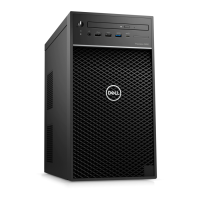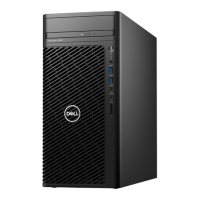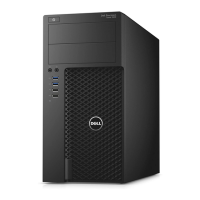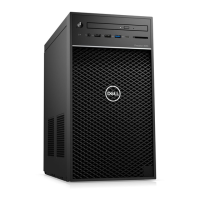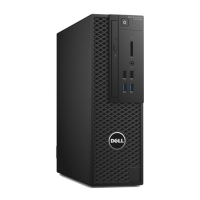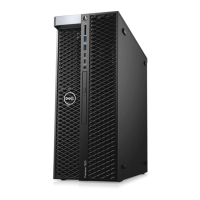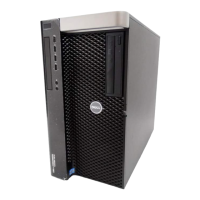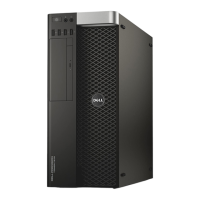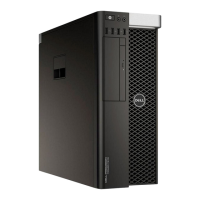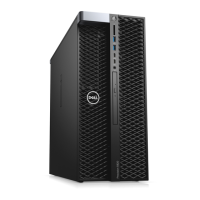What does 'General Failure' mean on my Dell Precision 3640 Tower?
- KKristin AguirreAug 27, 2025
The message is usually followed by specific information. For example, Printer out of paper. Take the appropriate action.
What does 'General Failure' mean on my Dell Precision 3640 Tower?
The message is usually followed by specific information. For example, Printer out of paper. Take the appropriate action.
What to do if my Dell Precision 3640 Tower Desktop says 'Not Enough Memory or Resources'?
Close all windows and open the program that you want to use.
How to resolve 'Gate A20 Failure' on my Dell Desktop?
Reinstall the memory module or, if necessary, replace it.
What to do if my Dell Precision 3640 Tower Desktop displays 'Invalid Configuration Information'?
Correct the appropriate options in the system setup program.
How to troubleshoot 'Auxiliary Device Failure' on Dell Desktop?
The touchpad or external mouse may be faulty. For an external mouse, check the cable connection. Enable the Pointing Device option in the System Setup program.
Why does my Dell Precision 3640 Tower say 'Bad Command or File Name'?
Ensure that you have spelled the command correctly, put spaces in the proper place, and used the correct path name.
What to do if my Dell Precision 3640 Tower Desktop displays 'Drive Not Ready'?
Install a hard drive in the hard drive bay.
What to do if my Dell Desktop says 'No boot device available'?
If the hard drive is your boot device, ensure that the drive is installed, properly seated, and partitioned as a boot device.
What does 'Seek Error' mean on my Dell Desktop?
The operating system cannot find a specific track on the hard drive.
What does 'Data Error' mean on my Dell Desktop?
The hard drive cannot read the data.
Essential guidelines for safe computer operation and maintenance.
Precautionary steps to take before accessing internal computer components.
Critical measures to protect yourself and the computer from hazards.
Methods to prevent damage to sensitive electronic components from static electricity.
Procedures to follow after completing internal computer maintenance or repair.
Details DDR4 memory technology, its specifications, and differences from DDR3.
Overview of Intel RST, its features, and RAID configurations.
Highlights the benefits of using DisplayPort over USB Type-C connections.
Explains the features and advantages of the HDMI 2.0 standard.
Lists the essential tools required for performing disassembly and reassembly tasks.
Identifies and categorizes screws used for various component installations.
Instructions for removing and installing the rubber feet on the computer chassis.
Procedures for safely removing and reinstalling the computer's outer cover.
Steps for removing and installing an optional Secure Digital (SD) card.
Instructions for removing and installing the front bezel of the computer.
Detailed steps for removing and installing 3.5-inch and 2.5-inch hard disk drives.
Procedures for opening and closing the power supply unit (PSU) hinge mechanism.
Step-by-step guide for removing and installing the system's graphics card.
Instructions for removing and installing memory modules (RAM) on the system board.
Procedures for removing and installing the internal computer speaker.
Steps for removing and installing the coin cell battery that maintains system settings.
Detailed instructions for removing and installing the computer's power supply unit.
Procedures for removing and installing the optical disc drive.
Steps for removing and installing the wireless local area network module and antenna.
Instructions for removing and installing the input/output (IO) panel.
Procedures for removing and installing PCIe Solid State Drive (SSD) cards.
Steps for removing and installing the computer's power button module.
Procedures for removing and installing heatsink assemblies for different CPU wattages.
Instructions for removing and installing the Voltage Regulator (VR) heat sink.
Procedures for removing and installing the front cooling fan.
Instructions for removing and installing the system chassis cooling fan.
Procedures for removing and installing optional Input/Output cards.
Detailed steps for removing and installing the computer's central processing unit (CPU).
Instructions for removing and installing the chassis intrusion switch.
Comprehensive steps for removing and installing the main system board.
Illustrates the system board layout, ports, and connectors.
Procedure to reset the Real-Time Clock (RTC) for system recovery from boot issues.
Explanation of power-supply and power button LED indicators for system status.
Lists and explains various diagnostic error codes and their meanings.
Lists and explains common system error messages encountered during operation.
Guidance on using Dell SupportAssist OS Recovery for system boot problems.
Information on accessing Dell's online support, manuals, and drivers.
Details on how to contact Dell technical support and customer service.
Instructions for installing and removing the system's rear cable management cover.
Instructions for installing and removing the front dust filter for system protection.
| Processor Options | Intel Core i9, i7, i5, i3; Intel Xeon W-Series |
|---|---|
| Operating System | Windows 10 Pro, Windows 10 Home, Ubuntu Linux, Red Hat Enterprise Linux 8.2 |
| Memory | Up to 128GB DDR4 |
| Storage Options | 2.5" HDD/SSD, M.2 SSD, 3.5" HDD |
| Storage Specific | M.2 PCIe NVMe SSD |
| Graphics Options | NVIDIA Quadro, AMD Radeon Pro, Integrated Intel UHD Graphics |
| Graphics Specific | Up to NVIDIA Quadro RTX 5000 (16GB GDDR6) |
| Dimensions | 175mm (6.89 inches) |
| Weight | 6.6 kg |
| Expansion Slots | 1 x PCIe x16 Gen3, 1 x PCIe x4 Gen3, 1 x PCIe x1 Gen3 |
| Front Ports | 2 USB 3.2 Gen 1 Type-A, 1 Universal Audio Jack |
| Rear Ports | 2 USB 2.0 Type-A, 1 RJ-45 Ethernet |
| Other Ports | Optional Serial Port, Optional PS/2 Ports |
| Power Supply | 300W EPA Bronze 550W EPA Platinum |
